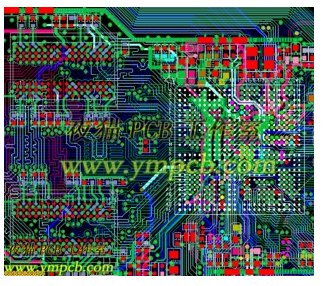PCBA refers to the process of mounting, inserting and soldering bare PCB components. The PCBA processing process needs to go through a series of processes to complete the production. The PCBA processing process can be divided into several major processes, SMT patch processing - DIP plug-in processing - PCBA testing - finished product assembly.
1. SMT patch processing link
The process of SMT patch processing is: solder paste mixing - solder paste printing - SPI - placement - reflow soldering - AOI - rework.
1. Stirring solder paste
After the solder paste is taken out of the refrigerator and thawed, it is stirred by hand or machine to suit printing and soldering.

2. Solder paste printing
Place the solder paste on the stencil, and use a squeegee to print the solder paste onto the PCB pads.
3. SPI
SPI is the solder paste thickness detector, which can detect the printing of solder paste and control the effect of solder paste printing.
4. Mounting
The patch components are placed on the feeder, and the placement machine head accurately mounts the components on the feeder on the PCB pads through identification.
5. Reflow soldering
The mounted PCB board is subjected to reflow soldering, and through the high temperature inside, the paste-like solder paste is heated to become liquid, and finally it is cooled and solidified to complete the soldering.
6. AOI
AOI is automatic optical inspection, which can detect the welding effect of PCB board through scanning, and can detect the defects of the board.
7. Repair
Repair the defects detected by AOI or manually.
2. DIP plug-in processing link
The process of DIP plug-in processing is: plug-in - wave soldering - trimming - post-welding processing - washing board - quality inspection.
1. Plug-in
Process the pins of the plug-in materials and insert them on the PCB board
2. Wave soldering
Pass the inserted board through wave soldering. In this process, liquid tin will be sprayed onto the PCB board, and finally it will be cooled to complete the soldering.
3. Cut the feet
The pins of the soldered board are too long and need to be trimmed.
4. Post welding processing
Use an electric soldering iron to manually solder the components.
5. Wash the plate
After wave soldering, the board will be dirty, so it needs to be cleaned with washing water and washing tank, or washing with a machine.
6. Quality inspection
The PCB board is inspected, the unqualified products need to be repaired, and the qualified products can enter the next process.
Three, PCBA test
PCBA test can be divided into ICT test, FCT test, aging test, vibration test, etc.
PCBA test is a big test. According to different products and different customer requirements, the test methods used are different. The ICT test is to detect the welding of components and the on-off conditions of the circuit, while the FCT test is to detect the input and output parameters of the PCBA board to see if it meets the requirements.
Fourth, finished product assembly
The PCBA board that has passed the test is assembled into the shell, and then tested, and finally it can be shipped.